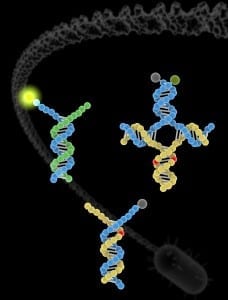More crops with less water.
The invention that achieved that won the title Innovation of the Year from the Dutch business community. The people behind the invention say they are making a modest contribution to the fight against food shortages.
How much water do you need to grow a kilogram of string beans or a sack of potatoes? Dutch company Dacom has developed the TerraSen, a device that gives you detailed answers to those questions.
It’s a 60 centimetre tube containing a sensor which measures soil moisture at different depths. The measurements are sent, together with the local weather forecast, to a central database. The grower gets advice on how much water to use in irrigation by return of digital post.
The service is available all round the world. Dacom has offices in Saudi Arabia, Russia, Argentina, Tunisia, China, South Africa and nearly every West European country.
Generous
Optimising water use would seem particularly useful in areas of shortage where they have to be careful with their precious water. But no, that’s not the case. Paradoxically, farmers in dry areas risk disease, crop death and production losses because, according to Dacom director Janneke Hadders, they tend to be too generous with water.
“Something you wouldn’t expect is that, in countries where water is scarce, they often use too much water. In areas of water shortages, growers need to have good sprinkler systems. That makes it very easy to give the crops water and easy to give too much. Sometimes half as much is all that’s needed.”
Homogenous
Irrigation specialist Koen Roest of the Agricultural University of Wageningen points out that the soil sensor can be used anywhere but will work best where the composition of the soil is much the same over a large area:
“What the device is measuring is the moisture level of a column of a half metre around the position of the sensor in the ground. However, you’re giving advice for large areas, up to 100 hectares. The question then is: how representative is that one measurement for a larger area? It’s easier to apply in areas where the soil is homogenous than in areas where it’s heterogeneous.”
Bookmark this page for “soil sensor” and check back regularly as these articles update on a very frequent basis. The view is set to “news”. Try clicking on “video” and “2” for more articles.
>









